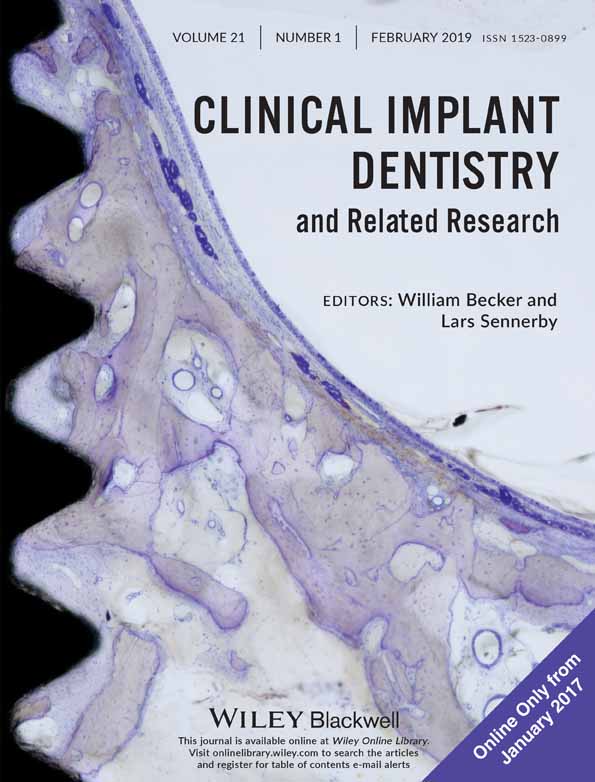Computer-guided calvarial mono-cortical bone blocks harvest: A novel approach for three-dimensional alveolar reconstruction of atrophic maxilla
Abstract
Background
Calvarial bone grafts have been one of the grafting options that provides predictable results for three-dimensional reconstruction of severely atrophied ridges owing to their low resorption and rapid revascularization, thus providing adequate volume for implant insertion. The aim of this study was to introduce a computer-guided technique for calvarial graft harvest to minimize the complications known with grafting from this donor site.
Materials and Methods
Eight patients, suffering from severely atrophied, completely edentulous maxillary ridges, with an age range (21-30 years) were operated on (six males and two females). A custom-made guide for each patient based on preoperative computed tomography (CT) was fabricated for harvesting the outer table cortical bone blocks from the parietal bone, then particulate bone was collected with an auto-chip maker. Bilateral sinus lifting was indicated in all cases. The bone blocks were fixed intraorally and the bone particulates filled the gaps and the volume created by sinus lifting, then the whole complex was covered with collagen membranes fixed with titanium tacks. Immediate and 6 months CT were requested for evaluation of the guide accuracy and the graft integration, respectively.
Results
In all cases, the guide was found to accurately fit into its preplanned position and to correctly locate the anticipated harvest site with the needed dimensions of the bone blocks. No intraoperative complications were encountered such as breakage through the inner table or cerebrospinal fluid leakage. Postoperatively, all the cases showed uneventual healing except one case that had an anterior dehiscence.
Conclusion
The computer-guided calvarial bone blocks harvest from the parietal bone is safe and predictable technique for three-dimensional reconstruction of severely atrophic edentulous maxilla.
CONFLICT OF INTEREST
The authors declare that they have no conflict of interest with the contents of this article.




